emqx安装
2024年9月27日大约 4 分钟
操作系统中安装
类似教程和文档太多,针对windows和linux有不同的安装方式,这里就不具体介绍。主要介绍下docker方式安装。
docker安装
提示
运行容器前,没有网桥,请先创建网桥,用于容器间通讯: docker network create -d bridge fastbee-bridge
执行一下命令安装emqx5.1
docker run \
--name emqx \
--publish 1883:1883 \
--publish 8083:8083 \
--publish 8883:8883 \
--publish 8084:8084 \
--publish 18083:18083 \
--env TimeZone=Asia/Shanghai \
--volume /etc/localtime:/etc/localtime \
--restart unless-stopped \
--detach \
emqx:5.1Emqx5配置
Emqx配置Http认证和Webhook(处理客户端上下线),有两种方式:
- 通过emqx.conf文件配置,已有配置好的文件位于
docker/data/emqx/ect文件夹; - 通过18083端口,打开Emqx控制台,创建客户端认证,数据桥接和规则
- 通过emqx.conf文件配置,已有配置好的文件位于
Emqx账号
- 控制台默认账号 (admin,public)
- docker-compose方式部署,emqx.conf中配置的账号(admin,admin123)
注意
Emqx控制台修改的账号,配置的Http认证、Webhook和规则会被emqx.conf中对应配置覆盖掉。官网解释如下:
- 通过 Dashboard、HTTP API 或 CLI 进行的更改将在运行时写入 data/configs/cluster.hocon 文件并立即生效。
- 如果相同的配置项在 etc/emqx.conf 文件中设置不同值,则在重新启动后,最终生效的是 etc/emqx.conf 中的配置。 为避免混淆,强烈建议不要在 cluster.hocon 和 emqx.conf 中具有相同的配置键。
emqx.conf配置文件中存在任何规则,设备消息转发的规则,也要配置在emqx.conf中。
1.配置文件方式
下面内容复制到emqx.conf文件中
# 设置控制台端口和默认账号
dashboard {
listeners.http {
bind = 18083
}
default_username = "admin"
default_password = "admin123"
}
# http 认证
authentication = [
{
mechanism = password_based
backend = http
enable = true
method = post
url = "http://177.7.0.13:8080/iot/tool/mqtt/authv5"
body {
clientid = "${clientid}"
username = "${username}"
password = "${password}"
peerhost = "${peerhost}"
}
headers {
"Content-Type" = "application/json"
"X-Request-Source" = "EMQX"
}
}
]
# WebHook(匹配上线和下线规则后触发)
bridges {
webhook.fastbee_hook =
{
enable = true
connect_timeout = 15s
retry_interval = 60s
pool_type = random
pool_size = 8
enable_pipelining = 100
max_retries = 2
request_timeout = 15s
method = post
url = "http://177.7.0.13:8080/iot/tool/mqtt/webhookv5"
body = "{\"clientid\" : \"${clientid}\",\"event\" : \"${event}\",\"peername\" : \"${peername}\"}"
headers = { accept = "application/json" "cache-control" = "no-cache" connection = "keep-alive" "content-type" = "application/json" "keep-alive" = "timeout=5"}
}
}
# 规则(处理上线和下线)
rule_engine {
ignore_sys_message = true
jq_function_default_timeout = 10s
rules.fastbee_rule =
{
sql = "SELECT * FROM \"t/#\",\"$events/client_connected\", \"$events/client_disconnected\", \"$events/session_subscribed\""
actions = ["webhook:fastbee_hook"]
enable = true
description = "处理设备上下线和订阅完主题的规则"
}
}2.控制台创建方式
a.配置Http认证
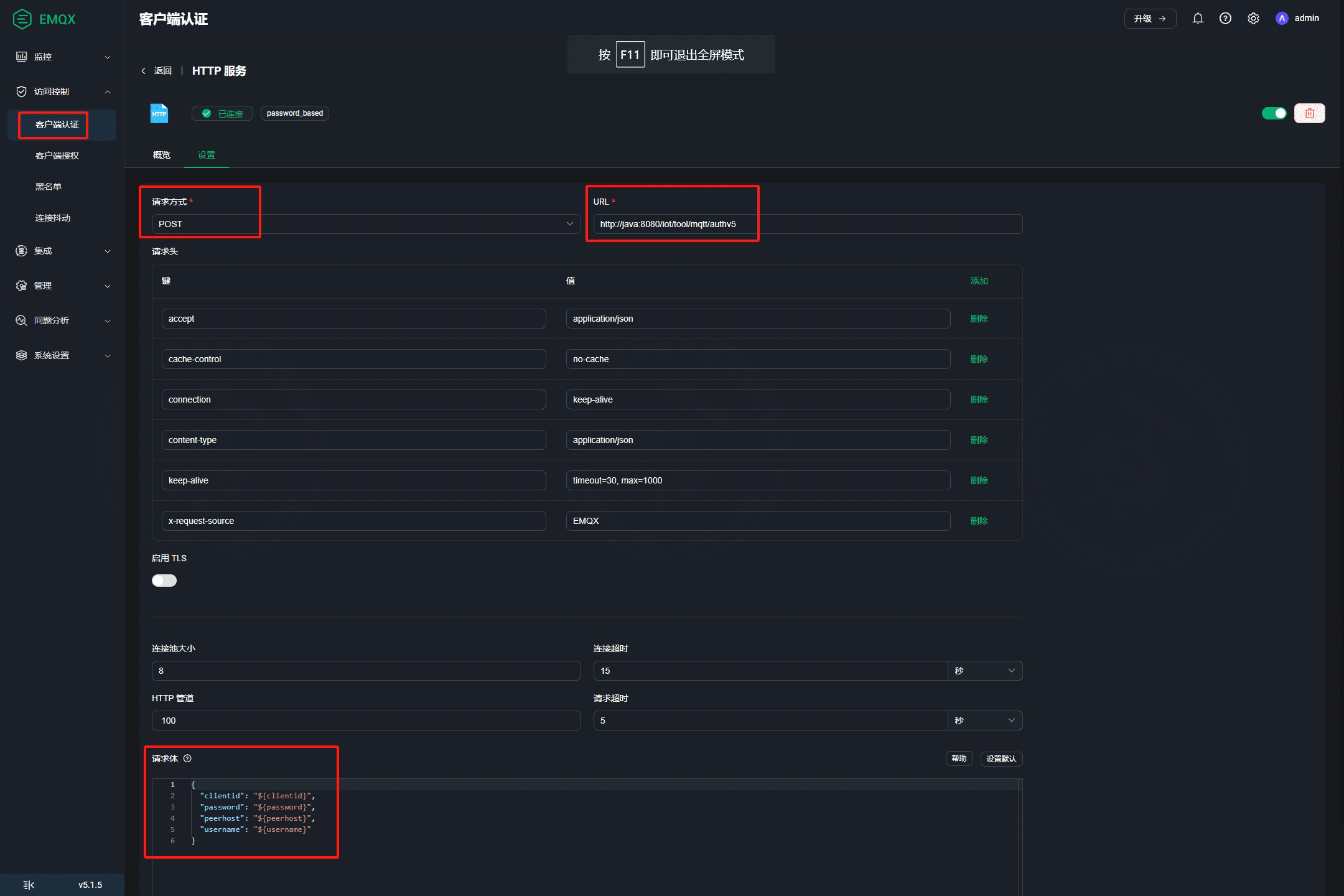
请求方式:POST
请求地址:http://177.7.0.13:8080/iot/tool/mqtt/authv5 (地址可以是内网或者外网,确保能访问)
请求Body:
{
"clientid": "${clientid}",
"password": "${password}",
"username": "${username}",
"peerhost": "${peerhost}"
}b.配置WebHook(目前emqx已经从5.1升级到5.7.2版本,两个版本webHook创建方式不一样,具体如下)
Webhook配置,先创建数据桥接,然后创建规则,规则跟数据桥接关联
5.1版本:
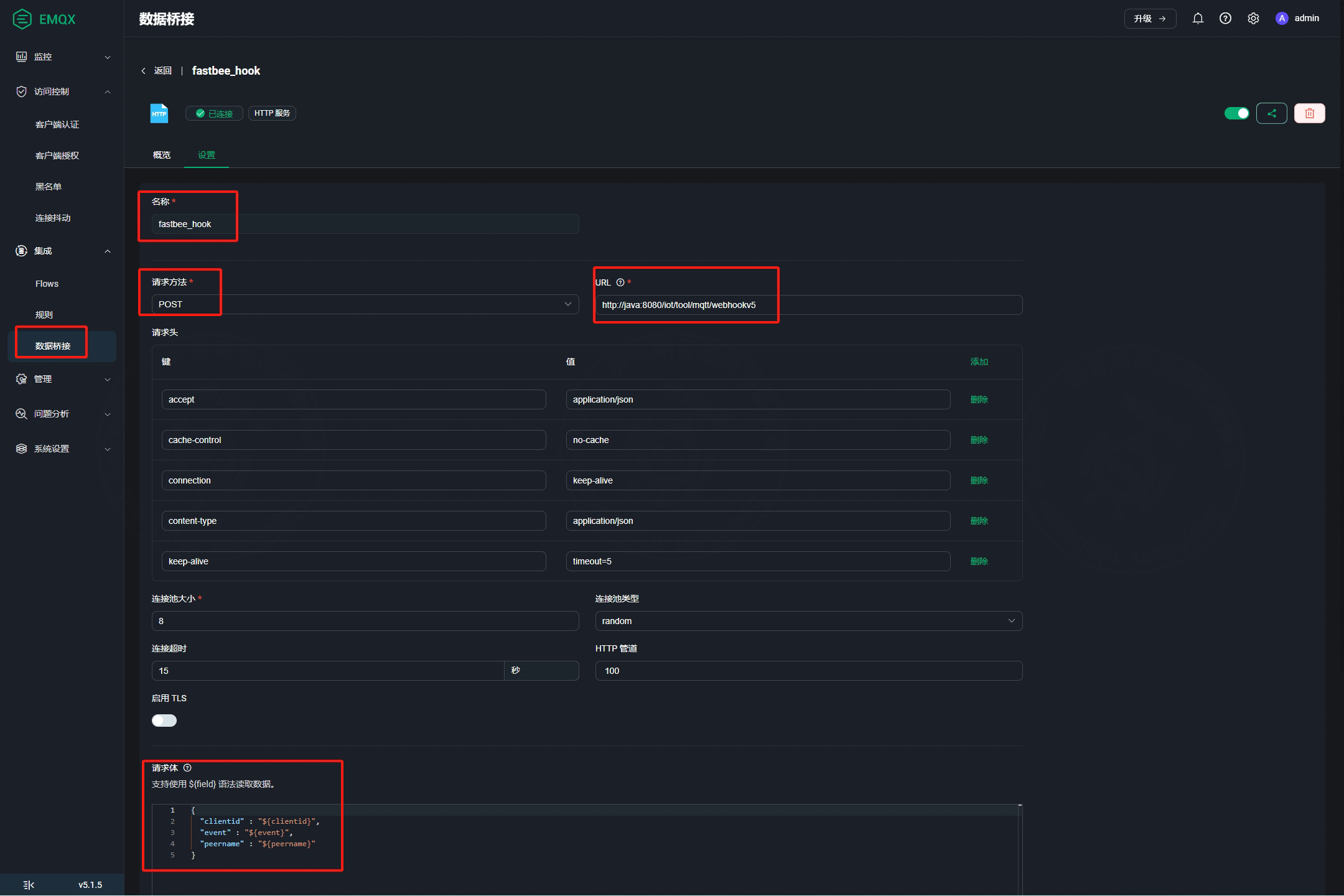
5.7.2版本: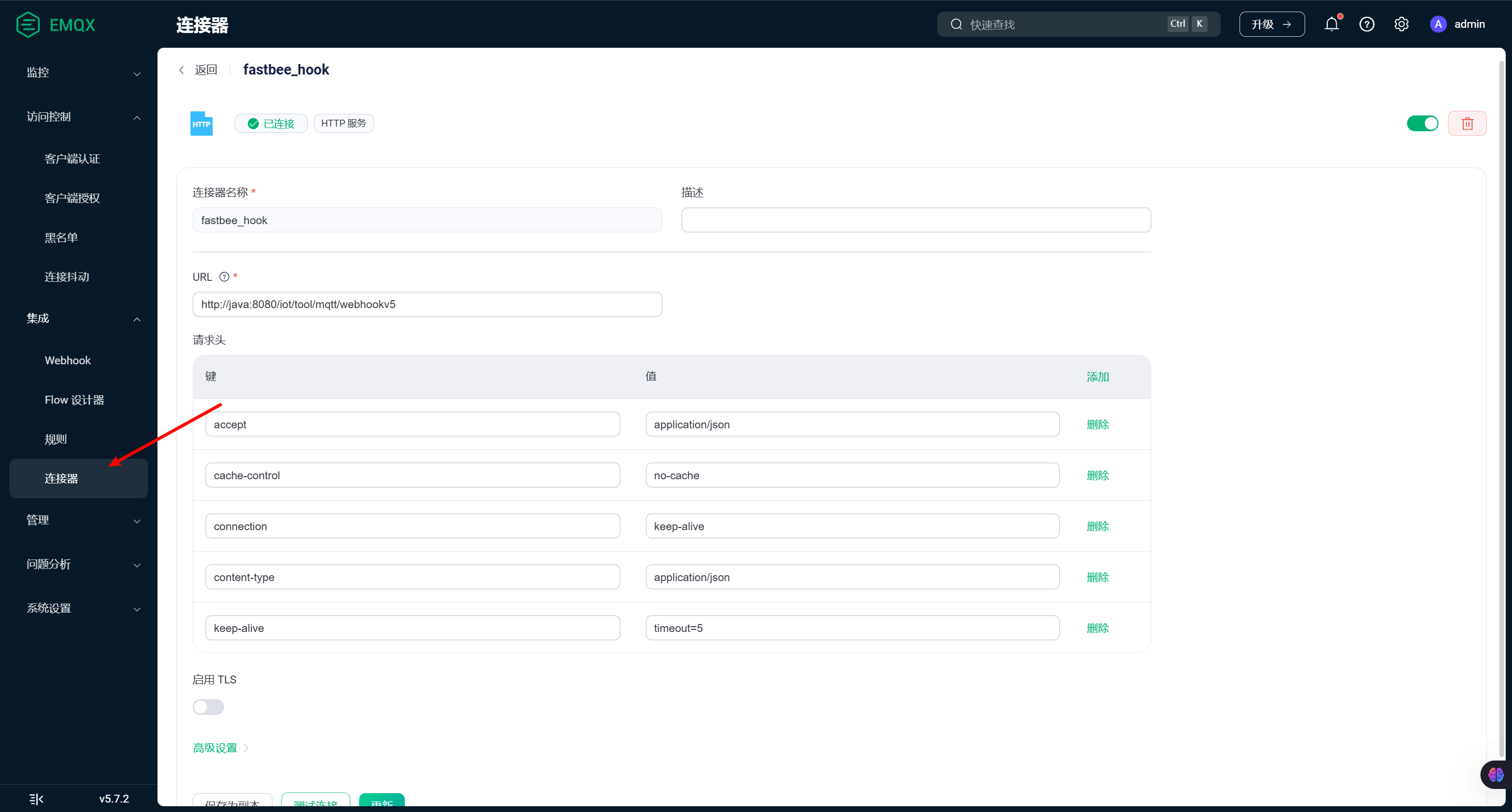
数据桥接名称:fastbee_hook (随意填写)
请求方式:POST
请求地址:http://177.7.0.13:8080/iot/tool/mqtt/webhookv5 (地址可以是内网或者外网,确保能访问)
请求Body:
{"clientid" : "${clientid}", "event" : "${event}", "peername" : "${peername}"}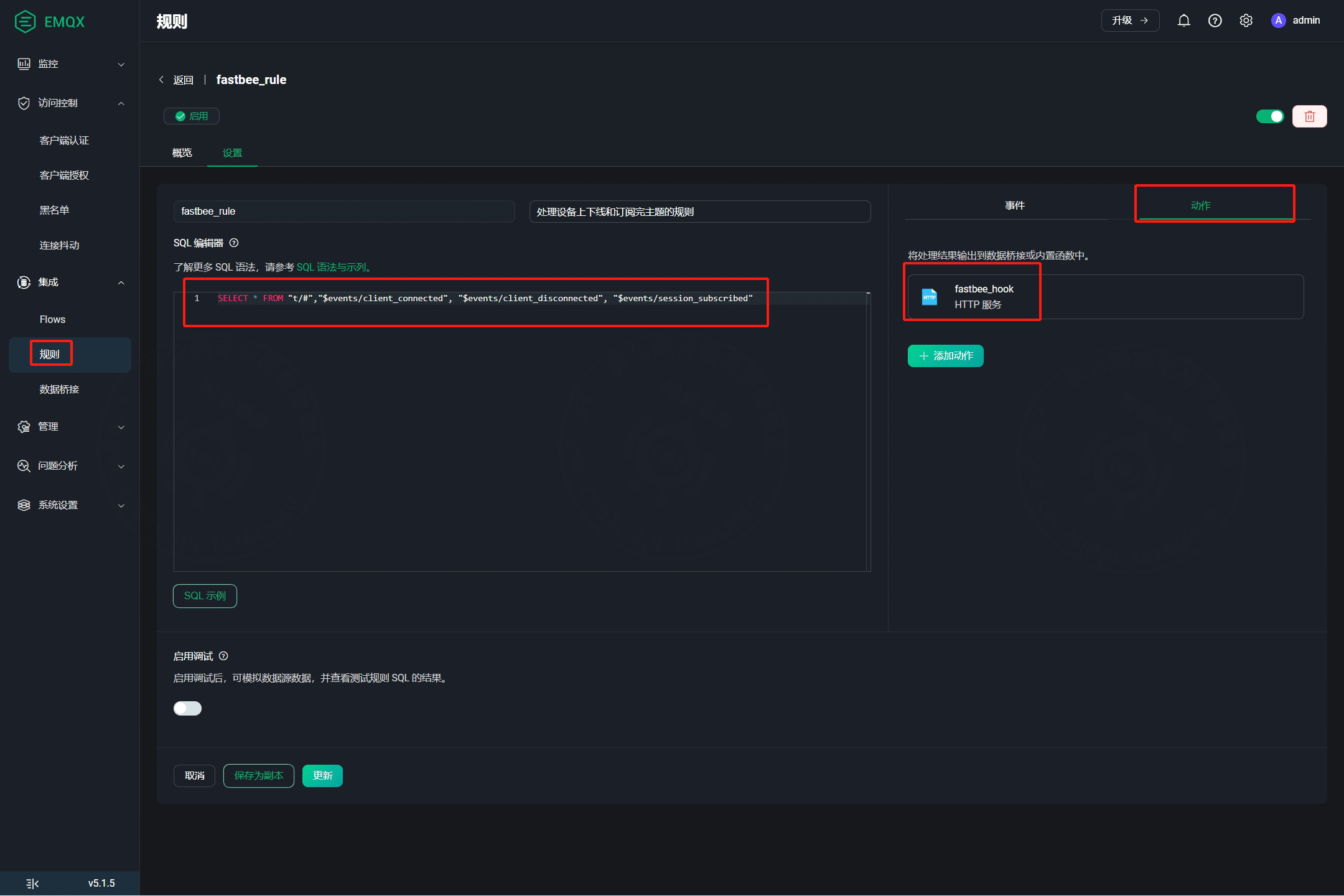
规则名称:fastbee_rule (随意填写)
SQL编辑器内容(分别代表客户端连接/断开连接/主题订阅完成):
SELECT * FROM "t/#","$events/client_connected", "$events/client_disconnected", "$events/session_subscribed"
动作:选择创建的数据桥接fastbee_hook3.设备上下线确认
为保证设备准确上下线,项目运行后,可在emqx控制台创建API密钥,并且将apiKey和apiSecret添加到application.yml中,重启Java服务

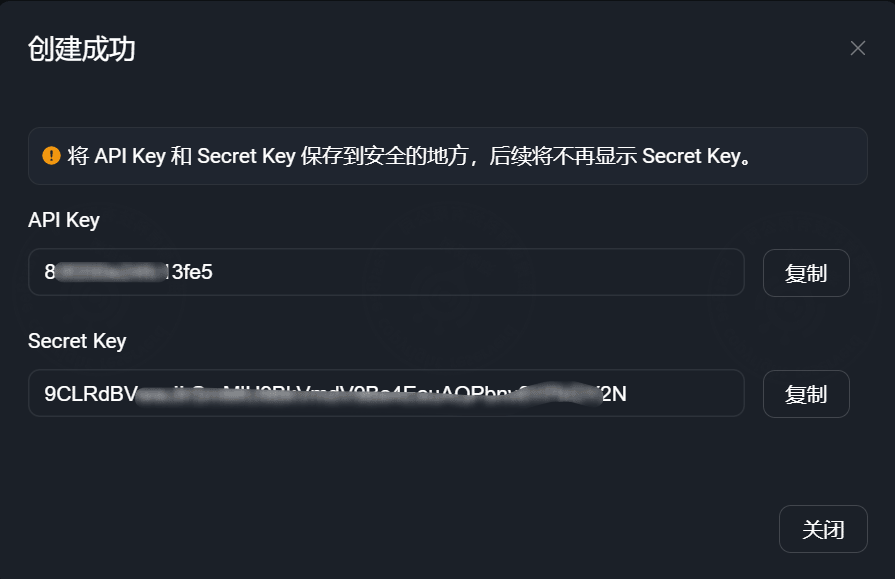
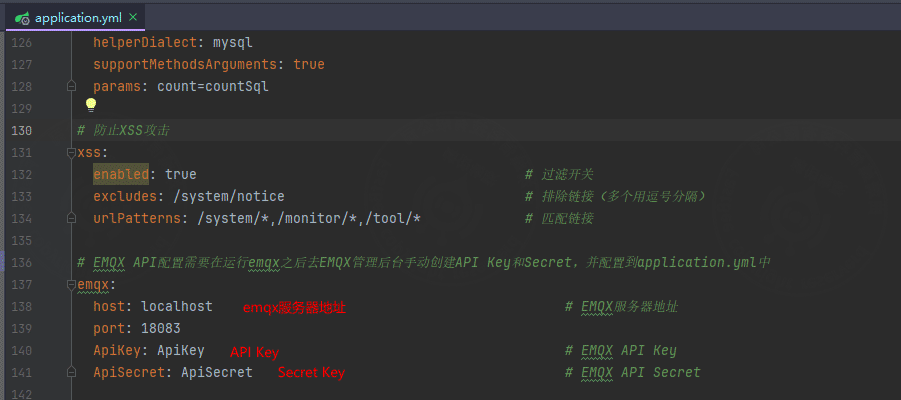
Emqx4.0 安装配置
提示
针对2.0及之前版本,新版本不再使用emqx4.0
FastBee v2.0以及之前版本使用Emqx4.0,新版本不再使用,这里介绍下emqx4.0的对应安装和配置,安装使用docker,其他安装方式可以查看emqx官网。
1. docker安装emqx4.0
docker run \
--name emqx \
--publish 1883:1883 \
--publish 8081:8081 \
--publish 8083:8083 \
--publish 8883:8883 \
--publish 8084:8084 \
--publish 18083:18083 \
--restart unless-stopped \
--detach \
emqx/emqx:v4.0.02. HTTP认证
提示
配置中可以注释超级管理员认证和ACL相关内容,提高速度
# a. 进入docker容器命令
# docker exec -it emqx /bin/sh
# b. 找到etc/plugins/emqx_auth_http.conf 文件,修改http认证请求地址,内容如下:
auth.http.auth_req = https://IP或域名/prod-api/iot/tool/mqtt/auth3.WebHook设备上下线
提示
注释不用的钩子事件,提高性能
## 找到 etc/plugins/emqx_web_hook.conf 文件,修改请求地址,内容如下:
web.hook.api.url = https://IP或域名/prod-api/iot/tool/mqtt/webhook4.禁用匿名认证
# 找到etc/emqx.conf 文件,修改值为false
allow_anonymous = true